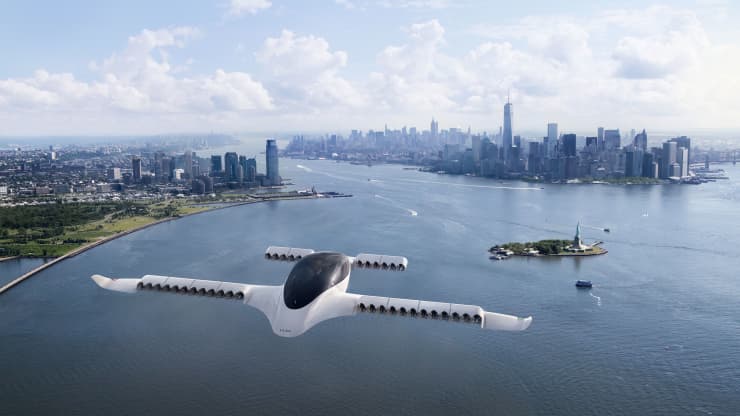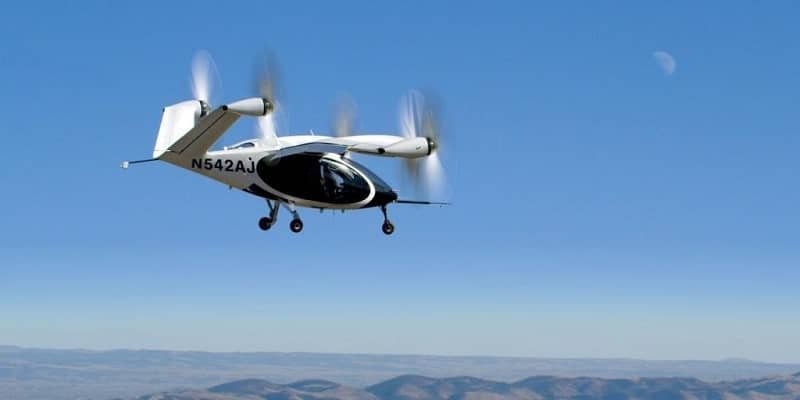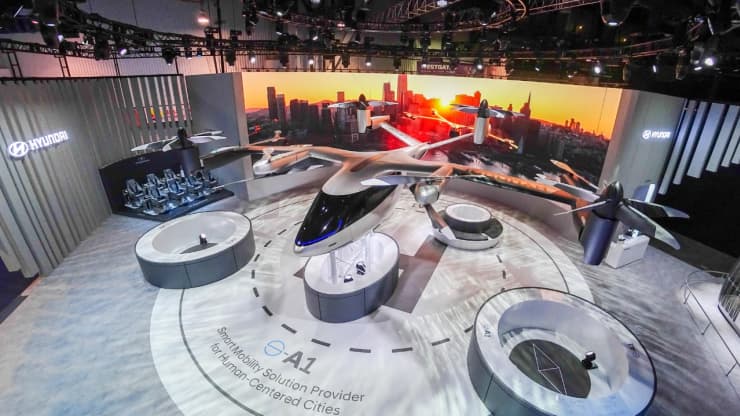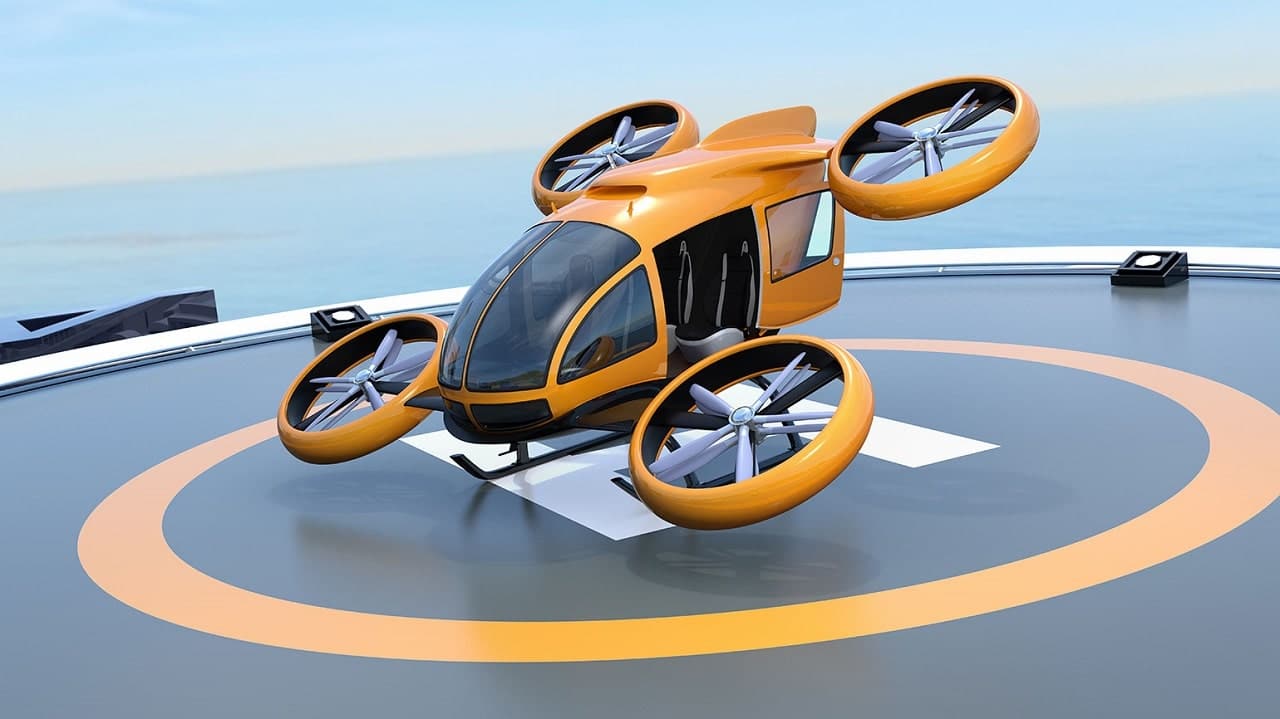the flying cars they are in the science fiction imagery and in the utopian plans of engineers since the beginning of the twentieth century. But in the next few years the vehicle market electric vertical take-off (eVTOL) is about to take off. Not because we will buy small domestic helicopters en masse but because the flying taxi business is really upon us. Some companies, such as the Californian Joby Aviation, the official tests have already begun. And by 2040 these “Ubers of the sky” will be worth 1,500 billion dollars.
The flying taxis are about to take off
As early as 1917, engineers all over the world began to think about the flying automobile, with the Curtiss Autoplane (which never took off). But in the last decade, technology has made great strides, not so much in aerodynamics or in the expected take-off modes, but in greater autonomy and power of the electric motors. The large investments we are seeing in the field of electric mobility have given the right foundation on which to build a flying car worthy of the name.
 Flying taxis by Lilium, a German startup
Flying taxis by Lilium, a German startup
But for a long time, prices will remain prohibitive, although some companies are already moving to market products of this type. For the first few years, flying cars will be a service: vertical take-off electric taxis. At first they will move in particularly rich areas but at the same time with many empty spaces, for safety reasons. Think of the deserts next to the freeways of Dubai, to move from one skyscraper to another. Or among the islands that dot the sea around the Japan. Or even on the American or Australian coasts. But within a few years the big cities will have more than one flying taxi service, with companies like Toyota, Hyundai, Uber, Airbus e Boeing who are already thinking about these vehicles.
How fast will these eVTOLs fly? And at what height?
Avoiding traffic to get from the suburban home to the office in the center, or vice versa, has enormous potential for commuting. Also because these vehicles, although not as fast as jets, will be able to fly at speeds that are difficult to reach during rush hour. No company has released official data on models under test, in order not to give unattainable standards during the test phase. But it seems some studies give a range of speed above 290 km / h, which as the crow flies allow you to cover great distances at a pace never seen before.
Some studies regarding these eVTOLs suggest a range of height ranging from 300 to 600 meters approximately, well below the heights of other more powerful aircraft. They are taxis for internal travel, there is no need to go beyond the clouds. But the NASA thinks they can come up to 1500 meters in the right conditions.
Where are we at? When the first flying taxis arrive
Toyota invested in January 394 million dollars in the Californian company Joby Aviation, which seems to be far ahead in the design of eVTOL ready to enter the flying taxi market. It recently announced that NASA is starting the first tests on their prototype. Before being active they must also convince the FAA, the agency that regulates air traffic in the United States. But passing the NASA tests should give you an edge to the proceedings, getting approval next year. And with Toyota factories to rely on for production, we could see the first taxi services as early as 2023 (although at the moment they have not yet clarified whether they intend to launch these services in Europe as well).
 Joby Aviation’s aircraft
Joby Aviation’s aircraft
According to the manufacturer, the “Joby Aviation aircraft is designed to carry one pilot and four passengers. It can travel over 150 miles on one charge and it is 100 times quieter than a helicopter in take-off and landing, and almost silent in flight ”. NASA is also testing noise pollution, to confirm or disprove these words.
But also Uber found an Asian partner for these sky taxis: Hyundai. At CES last year they showed a prototype of the service Uber Elevate. An electric PAV (Personal Air Vehicle) capable of traveling over 60 miles at a speed close to three hundred per hour, flying at approximately 600 meters above the ground. Hyundai has assured that it can recharge the vehicle in “minutes” but did not want to specify how many, or how. Internal tests have already started a year ago and the company aims to debut the service nel 2023 a Dallas, Los Angeles e Melbourne.

And these are not the only companies vying to launch the first “air taxi” service. Boeing is working to launch a taxi model for the Uber Elevate project, the German startup Lilium has made the maiden voyage and is completing tests on his five-seater taxi. And then there is Volocopter, backed by Intel, Daimler and Geely.
What will be the costs of the service? Are they really the future of mobility?
The “invisible hand” of the market can only have its say after the launch of these services, so making hasty predictions can be difficult. But at least in the beginning, with few rivals in the field for the very high cost of entry into the market (given the years of research required), the service will be limited and the prices necessarily high. Uber Elevate is expected to cost $ 200-225 for a flight from JFK Airport to downtown Manhattan. A price that is understandable for great managers, less so for office workers who go on vacation.
Ma Lilium (which promises to enter the market in 2025) thinks that the cost could be for the same trip drop to $ 70. Always in the segment of urban “premium” mobility. But not that high compared to a transfer by car. With the advantage that the journey would last only six minutes instead of about half an hour.
The price line is thin. It’s important. According to the Flight International reporter Dominic Perry, could make a difference for the future of air taxis. “If they are priced correctly, flying taxis will be able to democratize travel in cities where there are no alternatives to public transport or where the traffic and the size of the urban area (Sao Paulo in Brazil is the classic example) are enormous. If, however, they will simply become another helicopter service for the rich, then they will only transform mobility for the wealthy, further widening the economic gap. Will it relieve traffic? Most certainly not“.
Flying taxis are therefore about to arrive: it is no longer a hypothesis but a near future. However, the commercialization of those early services could make a difference. If they manage to attract public attention with competitive prices, they will become an attractive investment for many new companies. Especially i big names in European and American cars, as well as Silicon Valley. That by entering an established market they could again contribute to lowering the price of services, with the market doing the leveling work.
The technology for speed and safety, the economy for market positioning. Both must work perfectly for air taxis to build trust and succeed. And we cross our fingers: we really want to take a ride in a flying car.
















Leave a Reply
View Comments